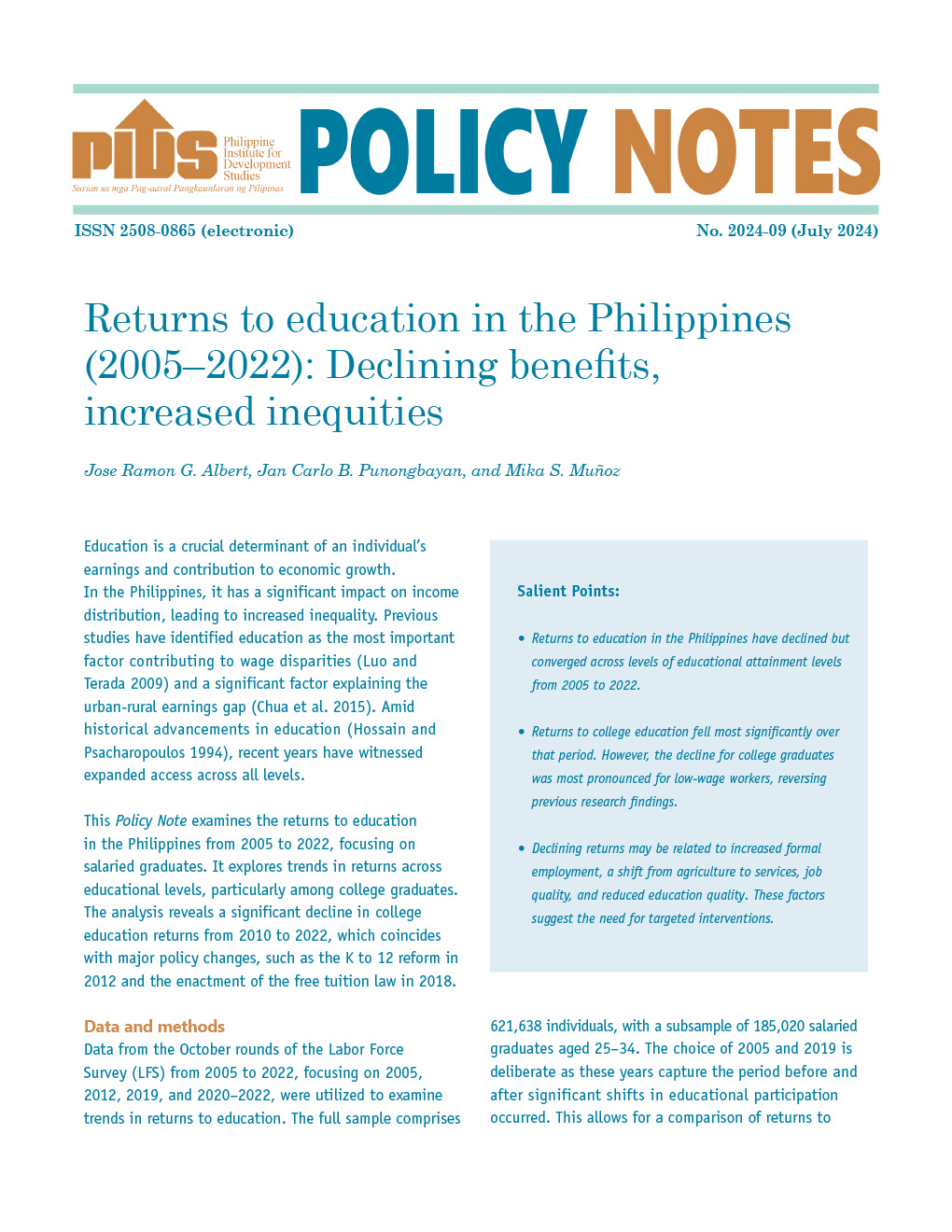In our country, it seems, we need to figure out how to keep boys in school and how to motivate them to complete their education
Girls outperform boys in practically all measures of education performance in the Philippines. From dropout, to graduation rates, to achievement tests, boys are underperforming. While many countries in the world need to bring more girls to school, in our country it seems, we need to figure out how to keep boys in school and how to motivate them to complete their education.
The evidence is overwhelming.
- Boys are less likely to be in school than girls: among boys aged 6-11 the out-of-school rate is 7.47%; for girls it is 5.57% in 2013
- Boys drop out at a higher rate than girls from primary school onwards. In secondary school, the dropout rates of boys are twice that of girls’.
- Girls scored higher than boys in every single subject on the National Achievement Test for grade 6 students in at least the past 10 years.
- Functional literacy rate among boys 10-15 years old in 2008 was 7.5 percentage points lower (55.5%) than that of girls (63%).
- Cohort survival rate is the percentage of entrants into primary or secondary school who complete the cycle. In 2013, the high school cohort survival rate of boys was 72.36%, while for girls, the rate was 81.83%. In primary school, the cohort survival rate was 75.14% (for boys) and 82.19% (for girls).
- The APIS 2011 results suggest that for every 80 men, there are 100 women attending college or post-college schooling.
To summarize, compared to girls, boys drop out at higher rates, are less likely to graduate on time, are less likely to make it to tertiary education, and are less likely to be functionally literate. They also get lower scores in achievement tests across all subjects.
Table 1: Education Statistics by Gender
Table 1. Education Statistics by Gender
Indicator Boy Girl Source
Out of school rate 6-11 years old 7.47% 5.57% APIS* 2013
Out of school rate 12-15 years old 9.37% 4.29% APIS* 2013
Dropout rate high school 3.32% 1.64% DepEd BEIS 2013
Functional literacy 10-15 years old 55.5% 63% FLEMMS* 2008
Cohort survival rate high school 72.36% 81.83% DepEd 2013
Cohort survival rate elementary 75.14% 82.19% DepEd 2013
National Achievement Test (Grade 6) Percent moving toward mastery or higher level of mastery 57.71% 65.46% DepEd 2011
*Conducted by the Philippine Statistical Agency (PSA); Annual Poverty Indicator Survey (APIS); Functional Literacy, Education, and Mass Media Survey (FLEMMS)
The chronic underperformance of boys is a problem that needs government attention. Having a society with generations of under-educated boys means large economic costs, as well as potentially dangerous social imbalances that could be harmful for women.
When the woman in a family is the better educated and has larger potential income outside the home, she is expected to do both full-time work and fulfill traditional home and child-care duties. Taken to the extreme, research in other countries has found that well-educated and highly paid women who are in unequal partnerships with their spouse are vulnerable to domestic abuse.
What might be causing the chronic underperformance of boys?
While we have a lot of data to show how wide the gaps are, we do not know much about what causes them. This is a problem that stems from many factors.
Schools are a natural place to start looking for a solution. Motivation to go to school appears to be lower among boys. When asked why they do not go to school, boys in the 12-15 year old age range are more likely to say that, that is because of a lack of personal interest (56.19%) than girls (35.68%).
A Unicef report in 2011 revealed that 87% of elementary school teachers and 76% of high school teachers are women. By comparison, in Thailand it is 55% for high schools and 60% for elementary schools.
In many African countries (where the education disparities are in favor of boys), the number of male teachers is overwhelming when compared to the number of female teachers. Having male role models can positively influence boys’ motivation to stay in school, and the acute absence of them in schools might be part of the problem. There is scope for attracting (and hiring) more males to the teaching profession.
Household economics is another important factor. Boys can work for money at a younger age than girls. The same Unicef report cited above says that the gaps between boys and girls are reduced when socio-economic circumstances get better. This means that reducing poverty through programs like the government’s conditional cash transfer (the 4Ps) can help reduce dropout rates among older boys. We should consider giving larger incentives for boys to stay in school, particularly when they are older and able to work for pay.
There are many other possible causes. The first important step to take is to systematically investigate the potential causes of the underperformance of boys. A gender analysis of available school and social sector data can help us gain a comprehensive picture of the extent and causes of underperformance of boys. —Rappler.com
Clarissa C. David is a Professor at the UP College of Mass Communication and a fellow of Social Weather Stations Inc. She is also the 2015 Outstanding YoungScientist awardee for social science. Jose Ramon "Toots” Albert is a Senior Research Fellow at the Philippine Institute of Development Studies and served as Secretary General of the National Statistics Coordinating Board.
Boys underperforming in school: What can be done?












